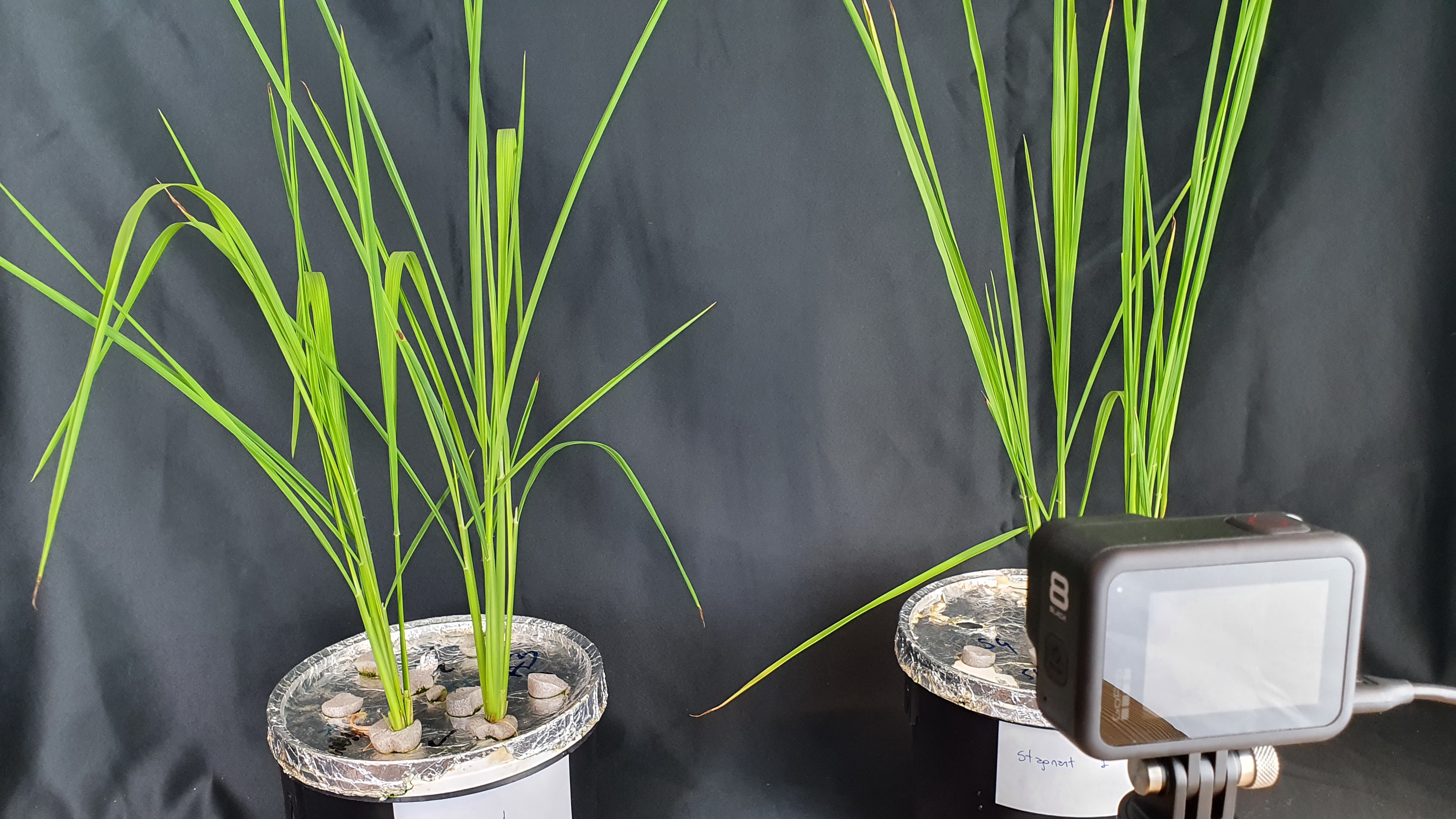The importance of the root barrier to ROL for radial water loss
Lucas and Song are working together on a work package where they investigate the response of rice to water stress. The idea is that priming the plants with a period of too much water (waterlogging), enable survival if a period of too little water follows. The reason is that some of the root traits conferring tolerance to waterlogging are similar to those involved in water stress.
Today, we are trying to provide convincing documentation of the responses to sudden water stress, i.e. the plants are moved into a nutrient solution with low water potential directly from a situation where the water supply is ample. The only difference is that one set of plants have had about a week to acclimate to waterlogging, whereas the other set of plants have been grown in aerated nutrient solution to mimic a well-drained soil.
Unfortunately, we are not going to reveal the final results here on this blog as it may prevent us from publishing our findings later on… Before you leave, please check out Lucas' paper in New Phytologist reporting the finding that the barrier to ROL also restricts radial water loss in roots of rice. The paper can be accessed from here!

We are using our GoPro Hero 8 camera to produce a nice time-lapse video of the desiccation responses in plants without a barrier to ROL (left) and in plants with (right). This photo is taken after 1 h of treatment and the plant to the left already shows the first signs of water stress (the leaves are rolling and bending).
Today, we are trying to provide convincing documentation of the responses to sudden water stress, i.e. the plants are moved into a nutrient solution with low water potential directly from a situation where the water supply is ample. The only difference is that one set of plants have had about a week to acclimate to waterlogging, whereas the other set of plants have been grown in aerated nutrient solution to mimic a well-drained soil.
Unfortunately, we are not going to reveal the final results here on this blog as it may prevent us from publishing our findings later on… Before you leave, please check out Lucas' paper in New Phytologist reporting the finding that the barrier to ROL also restricts radial water loss in roots of rice. The paper can be accessed from here!

We are using our GoPro Hero 8 camera to produce a nice time-lapse video of the desiccation responses in plants without a barrier to ROL (left) and in plants with (right). This photo is taken after 1 h of treatment and the plant to the left already shows the first signs of water stress (the leaves are rolling and bending).

